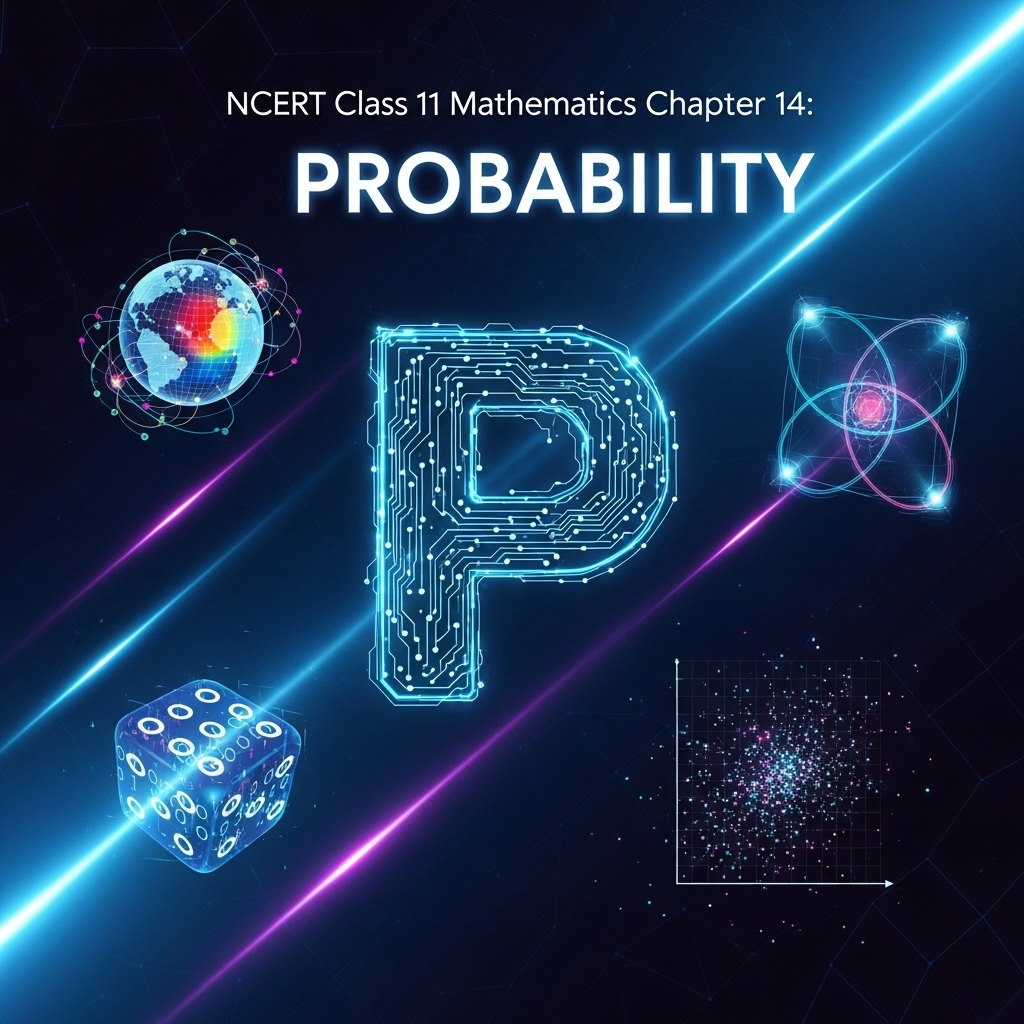Probability – NCERT Class 11 Mathematics Chapter 14 – Events, Axiomatic Approach, and Probability Calculations
Introduces the concept of events and sample spaces, classifies events, and describes the algebra of events including complementary, union, intersection, and mutually exclusive events. Covers the axiomatic approach to probability, calculation rules, mutually exclusive and exhaustive events, probability of compound events, and historical development of probability theory with examples and exercises.
Updated: 1 month ago

Probability
Chapter 14: Mathematics - Ultimate Study Guide | NCERT Class 11 Notes, Questions, Examples & Quiz 2025
Full Chapter Summary & Detailed Notes - Probability Class 11 NCERT
Overview & Key Concepts
- Chapter Goal: Introduce events and axiomatic probability. Focus: Sample space, event types, algebra, axioms. Exam Focus: Definitions, set operations, mutually exclusive/exhaustive. 2025 Updates: Coin/die examples emphasized. Fun Fact: Arbuthnot quote on reasoning. Core Idea: Subsets as events. Real-World: Coin tosses, dice rolls. Ties: Ch15 (conditional). Expanded: From classical to axiomatic.
- Wider Scope: Events via sets; probability axioms (PDF covers 14.1 events, 14.2 axioms up to coin ex).
- Expanded Content: Examples, exercises, steps.
14.1 Event
Random experiments, sample space S as universal set. Ex: Two coins S={HH,HT,TH,TT}. Event E subset of S, e.g., exactly one head E={HT,TH}. Occurrence: ω ∈ E.
14.1.1 Occurrence of an Event
Die ex: E="less than 4" occurs if 1,2,3. Not if 4,5,6.
14.1.2 Types of Events
Impossible: φ (multiple of 7 on die). Sure: S (odd or even). Simple: One point, e.g., {HH}. Compound: Multiple, e.g., exactly one head in three tosses.
14.1.3 Algebra of Events
Complement A' = S - A. A or B = A ∪ B. A and B = A ∩ B. A but not B = A - B. Ex1: Die prime A={2,3,5}, odd B={1,3,5}; A∪B={1,2,3,5}, etc.
14.1.4 Mutually Exclusive
A ∩ B = φ, e.g., odd/even on die. Not: Odd and <4 (3 common).
14.1.5 Exhaustive
Union = S, e.g., <4, >2<5, >4 on die. Mutually exclusive and exhaustive: Pairwise disjoint, cover S.
14.2 Axiomatic Approach
P: Power set to [0,1]. Axioms: P(E)≥0, P(S)=1, mutually exclusive add. Implies P(φ)=0. For finite S, 0≤P(ω_i)≤1, sum=1, P(A)=sum P(ω_i) in A. Ex: Coin P(H)=P(T)=1/2.
Summary
Events as subsets; algebra like sets. Axioms formalize probability. Master: Unions/intersections, types. Apps: Games of chance. Mantra: Subsets define happenings.
Why This Guide Stands Out
Tables from PDF, coin/die intuition, step-by-step sets, free 2025 with MathJax.
Key Themes & Tips
- Aspects: Classical (sets) to axiomatic (rules).
- Tip: Draw Venn for algebra; check disjoint for exclusive.
Exam Case Studies
Die events; two dice sums.
Project & Group Ideas
- Simulate coin tosses in Python, list events.
- Apps: Dice probability calculator.

Group Discussions
No forum posts available.


